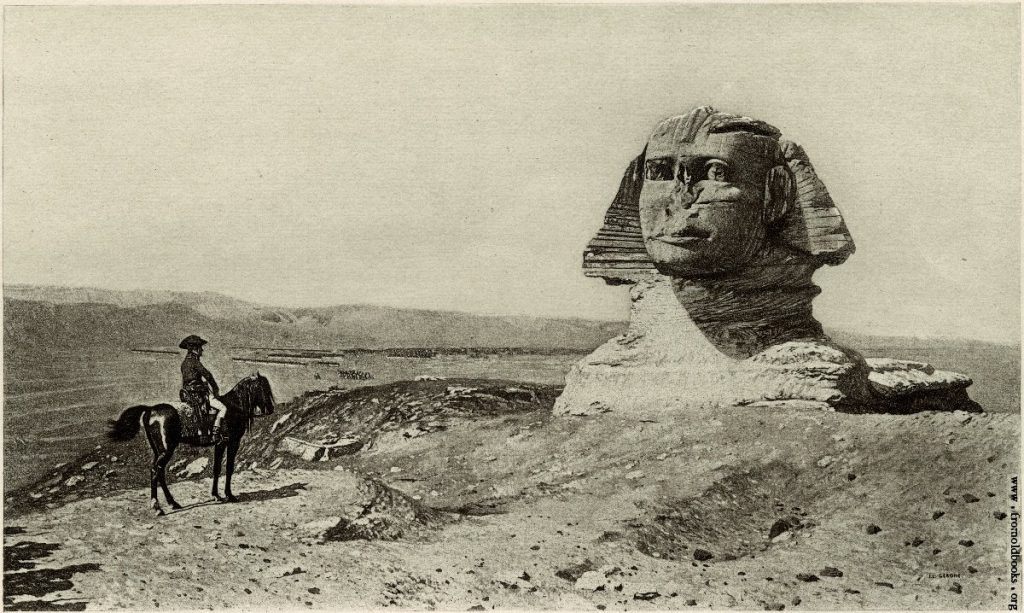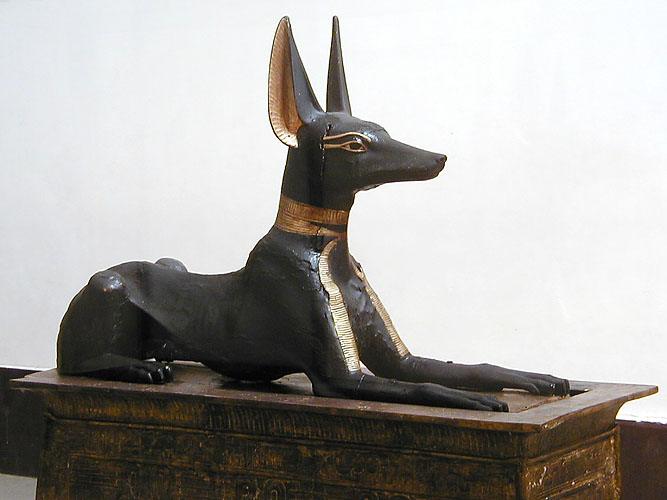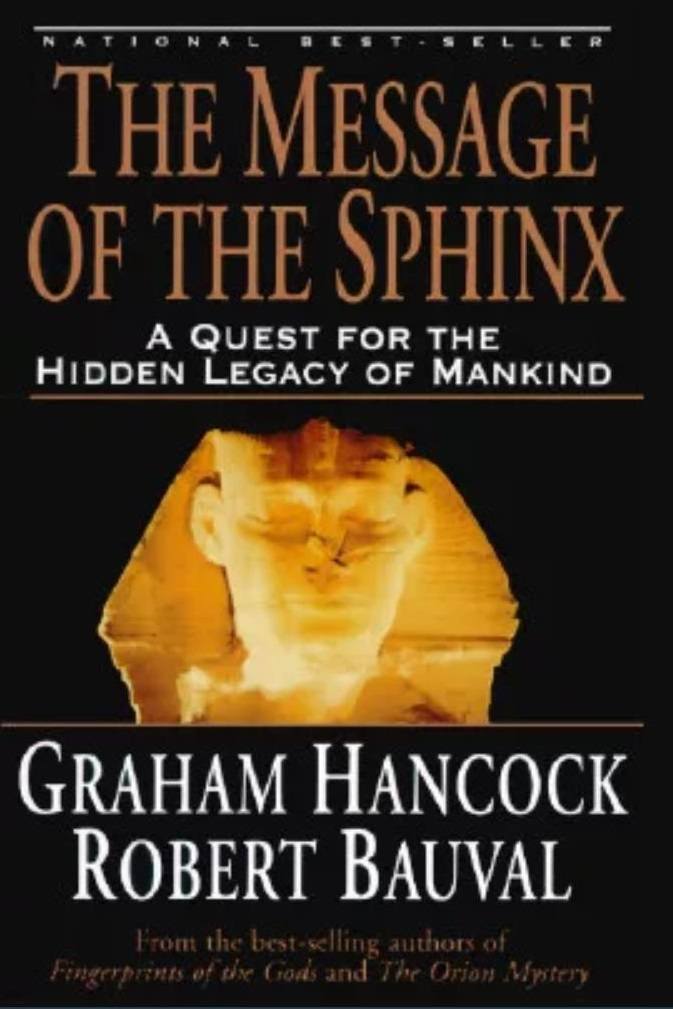Evidence of Civilizations Predating Our Recorded History (part 2)
Summary of Part 1
In my last blog, I explained my belief that the Sphinx was older than it is currently presumed to be. In fact, I proposed that it is at least 1,000 or more years older based on the weathering of the base structure. However, many people suggest it is much older than my simple estimation.
If you recall, I documented that Pharaoh Thutmose IV uncovered the Sphinx around 1450 BC. He also has his name (cartouche) stamped on a mud-brick wall surrounding the Sphinx complex. Clearly, he did not build the Sphinx but uncovered it.

Napoleon and the Great Sphinx
The Great Sphinx was old even before Khufu ruled
An ancient stone tablet called the Inventory Stela documents that the Sphinx was ancient and that Khufu found (discovered) and restored the Sphinx. Currently, mainstream Egyptologists believe the face on the Sphinx to be that of Khafre (Kharfa).
Watching (and paying special attention to the recitation of the Stela) you will hear that the Sphinx is described as being old and in need of repair in the time of Khafre.
If you watch (and especially listen to the narration) you will hear a translation of the Inventory Stela. The stela states that the Great Sphinx was old, worn, and in need of repair at the time of Khufu, and that the sphinx was located south of the Great Pyramid.
In the last episode, I presented a video that proves, structurally, it could not be Khafre. There is evidence that it is actually Thutmose IV. Whoever it is, this is obviously not the original face on the monument. Just by looking at the figure, you can see a major difference in the erosion of the head and the body.
A video I presented in Part 1 identifies erosion patterns that are consistent with heavy presentment water damage but the head does not reflect any water-related weathering. The ancient Egyptians were very pedantic regarding building structures and statues that were proportionate, and the head of the Sphinx is obviously not.
Not only was the head disproportionately smaller than the body, but significantly smaller than the original neck of the supposed Pharaoh.
An alternative carving on the Great Sphinx
If the head on the shrine was not the original face, who or what was its original image? The Sphinx is facing the rising sun on the spring equinox, symbolizing rebirth or resurrection. Since it was ancient at the time of Khufu, (2500 BC), it would have predated the time when Osiris was worshiped as the god of the resurrection (fifth dynasty).
Could this have been the face of Anubis, the god of resurrection? According to Wikipedia Anubis was associated with the afterlife in ancient Egypt in 3100 BC but was replaced by Osiris by the Middle Kingdom.

Reclining Anubis
Here are two videos that support the concept that the original image of the Sphinx was that of Anubis as shown in the photo above.
Proof ~ The “Sphinx” was Anubis
Robert Temple: The Sphinx and Anubis
If the information we have just reviewed is to be believed, the Sphinx is much older than we thought. But we have no information about the people who carved or constructed it. And if it was buried then reclaimed by Khufu as suggested in the “Inventory Stela”, how old can it be.
The Great Pyramid is older than Khufu
We are told that Khufu built the Great Pyramid, and this is also discredited in the Inventory Stela, which relates the pyramid built by Khufu as being equal in stature to that of his daughter. Additionally, the Great Pyramid was built without any paintings or hieroglyphics documenting who was interred within.
The known ancient Kingdoms (Old–2686 to 2181 BC, Middle–2181 to 2055 BC, and the New–2055–1650 BC) were very adept at publishing their works and making sure everything they did was documented. Kings had their life painted on the walls of their tombs.
But there is very little written about the construction of the pyramids and absolutely nothing in the supposed Kings Chamber and the Queen’s Chamber of the Great Pyramid. Unlike the tombs in the Valley of the Kings, the few rooms in the Great Pyramid are completely void of any writing or paintings normally associated with a burial tomb.
In fact, the vessel in the King’s Chamber of the Great Pyramid is not in the center of the room (which one would expect for a King’s burial crypt) but near one wall with no ornamentation.
And the granite box in the “Kings Chamber” was not a sarcophagus, nor something that would hold a sarcophagus, much less the eternal remains of someone as renowned as the great Khufu. If it was not a crypt for a king, what was it?
Serapeum of Saqqara
There is a fascinating site about 13.5 km south by southeast of the Giza plateau. Dug into the ground is a massive complex with 20 granite stone boxes estimated to be 100 tons (box and lid), with highly polished surfaces but rudimentary carvings on the side. It is argued that the polished nature of the granite boxes outshines the skill shown in the carvings.
Who could have put these boxes here, and what were their purposes? Watch the following video to find out more about these amazing boxes.
.
.
Evidence of advanced stone cutting tools
We are told that the great stones used to build the Great Pyramid were cut by hand using stone mallets and copper or bronze chisels. But some stones are not soft limestone but granite and are impossible to work with copper or bronze. And some of these stones show evidence of advanced machinery to cut or work the stones.
We see corner angles, chamfer cuts, and fillets (interior rounded cuts) that would require very advanced machinery. Some hard granite stones have boreholes that have circular striations indicative of a mechanical boring tool and some stones that are definitely circular in nature but would require a cutting wheel that is 30 feet (~10 meters) in diameter and about ¼ inch (0.6 cm) in width.
If the Egyptians had this capability, why was it not passed down to succeeding generations? You can see some stone workings that require advanced equipment at minute 7 of the video “Rethinking: Egypt”. You may also want to watch the companion video “Rethinking Egypt: Update”.
.
A book with controversial opinions
In this discussion, Mr. Hancock, and Robert Bauval collaborate to present a hard-hitting expose on the incorrect dating of the Sphinx, the Pyramids, and other monuments in Egypt, and that these and other artifacts are far older than the established Egyptologists care to acknowledge.
.
Conclusion
Instead, all this leads to the possibility of a higher intelligence constructing these structures thousands of years before the Old Kingdom. Could there have been a civilization on earth that is older than the Egyptians of the Early Dynastic Period?
We know the Ancient Sumerians emerged around 4000 BC, but their hero, Gilgamesh, supposedly survived a great flood. But they did not have the knowledge we are trying to find. If the flood that Gilgamesh survived was a global catastrophe, it could explain why the ancient knowledge did not survive and only simple tools were available once humans started to thrive again.
What was the cause of this catastrophe and did all civilizations meet the same fate? We see similar patterns in the decline of construction techniques all around the world.
This catastrophic event destroyed the civilization, and it has taken mankind this long to approach the abilities present in the building of the great pyramid, the stone walls of Peru, the ancient temples in Mexico, and many other ancient sites around the world.
I will describe some of these other sites in future reports.
Before you leave, have a look at a collection I made for you. Special things you might find interesting. Please visit Recommendations.
Photos Source:
An image of Napoleon and the Great Sphinx, taken from the public domain courtesy of WWW.fromoldbooks.org
Photo of reclining Anubis taken by Mr. Jon Bodsworth and offered copyright free. jon@egyptarchive.co.uk
Perhaps you like to read my first post on this topic.
There is Controversial Evidence of Prehistoric Civilizations.










Comments
Soby
Very interesting and informative article, great videos!
I have always been a fan of Forbidden Archaeology. Nowadays, science just can’t explain so many finds. And Egypt is a centre of one of the most mysterious and exciting civilization on Earth. I also believe that generally human civilization is much older then we used to think.
Taetske
Good Morning Soby,
Mother Earth holds a lot of mysteries and one lifetime will be far too short to explore it all. Luckily we have the internet to be able to read about all the things that are coming to light. Even if scientists cannot explain it all I am sure that in the future we might find some answers. I agree with you, human civilization is a lot older than we have thought it to be and for sure there have been numerous civilizations before us. Thank you for visiting my website.
Regards, Taetske
Ruya
I’ve always been interested in learning about prehistoric civilizations and how they used to live. It’s so exciting to read about ancient history. I also like watching documentaries about it and hope there will be more facts and more answers to unrevealed questions in the future. Thanks for sharing this article!
Taetske
Good afternoon Ruya,
Thank you for visiting my website and leaving a comment. I hope you downloaded your free PDF?
Mother Earth holds so many mysteries, one lifetime will not be enough to see it all. I am sure that in the future we will be surprised by new discoveries.
Regards, Taetske
Myles
For me, as an average citizen of Earth, it is indeed a fascinating question to be answered. What, Who and When was this advanced people here building these great structures. The technology required certainly isn’t chisel and hammer or some other stone age tools. I’m no expert or student in this topic but it is a truly interesting subject. Why did the builders and knowers of such advanced technology disappear. You mentioned the great flood or maybe such other global catastrophe. Keep up this good work Taetske!
Taetske
Good evening Myles,
Thank you for visiting my website and leaving a comment. I hope you downloaded your free PDF?
I would recommend you read the next two posts and you will find more information regarding the potential floods. They actually took place about 11,000 – 12,000 years ago and were caused by a comet striking the glaciers. I suggested one hit Canada and recent news says a crater was found on the edge of Greenland. Do not blindly follow someone’s opinion because they were taught this or that. Look at the physics of erosion, tool markings, and debris fields in the Americas. It is all very fascinating. I hope that in the future answers will appear as I am curious to know what happened.
Regards, Taetske
Joseph Stasaitis
This is real fascinating stuff. Good job researching this. I have studied about this a bit over the years. The alternative carving on the Sphinx gives much food for thought.
I am somewhat familiar with Osiris. I agree that the Sphinx is much older than previously thought. There are many clues that the pyramids were built by an advanced civilization. This I have heard from many sources over the years. This goes back before the Egyptians.
I appreciate your detailed research on this. Keep exploring there is much more to discover.
Taetske
Good evening Joseph,
It is an adventure to discover the journey of the human race. Many things are still hidden and perhaps we will never know. I believe there have been many different civilizations on this planet during the many millions of years. I am glad you enjoyed the post as much as I enjoyed researching it. There is so much to consider and now the sites in Turkey are really causing people to rethink where we came from. I may write another chapter to this but if I do, I want it to be original and not repeating what other bloggers have said. I will read what Mr. Graham Hancock has to say. You know he was allowed to present a TED talk but they only published it with a disclaimer saying that it was not accepted science. We all need to revisit the idea that we have been “civilized” for only 4500 years. Perhaps you like to read my post on the Stones of Ica/Peru.
Thank you for leaving a comment on my website. I hope you have downloaded your free PDF?
Regards, Taetske
Lok Which
i really enjoyed reading this article because I’ve been interested in knowing about prehistoric civilizations.W e really need to learn about the history to predict the future.Thsnks for this. I will strongly share this to my friends for them to also learn from this and I will be looking forward to your next posts on this.
Taetske
Good Morning Lok,
Thank you for leaving a comment on my website. I hope you have downloaded your free PDF?
I was really getting into the research and enjoyed knowing that there is an ancient civilization that no one knows about. Who were they and why did they perish. Did they teach the Egyptians how to carve stone or are these images older than the simple bronze and stone implements we think they had.
Regards, Taetske
Solomon
History is whatever the experts agree upon, whether they are right or wrong. I was watching a show omline where they were doing a computer analysis of the symmetry of the faces of some of the very large ancient statues we have, they were almost exact mirror images which is something that could never have been accomplished by artists doing it freehand. There is so much we don’t know about the past, and these may just be questions for which we will never know the answers.
This was a very educative post and I am off to read part one.
Taetske
Good Morning Solomon,
Nice to see you again. Thank you for your comment.
Keep reading and you will find some very interesting information. I hope to hear from you again as you continue with your investigation.
Regards, Taetske
AbdulMoez
Extremely interesting and great article. I find myself interested in history and there was a lot of new and interesting information. It’s always exciting about finding and learning new things from historic civilization. This is really awesome and great choice of topic. There’s so much to talk about on such topics and we still finding new things. Bes of luck for your future!
Taetske
Good Morning Abdul,
Thank you for visiting my website and leaving a comment. I hope you have downloaded your free PDF?
I agree with you that history is very interesting and we know so little of it. Things are coming to light all around the world putting the old version of history away and finding new documentation of very old civilizations. Keep an open mind and keep looking for better answers.
Regards, Taetske
Marsha Pearson
This is fascinating and presents some concepts with regard to the Sphinx and Pyramids that I was not aware of before. So, on another take, aside from the image concept of the Sphinx, if the differing erosion of the head and body points to the fact that it may have been “restored” at some point, why, over the years, has no one restored it again? Is it that the “restoration” done long long ago transformed it, which might be different than restoring it today? As it stands, won’t it become dust someday in the future without a restoration process of some kind?
Taetske
Good afternoon Marsha,
Thank you for your visit and for your comment. I hope you downloaded your free PDF? Tulip widget.
The Sphinx was buried up to its neckline in wind blown sand through much of its life. The drifting sand is relentless and constant maintenance is necessary to keep the statue uncovered. There are many opinions on what it was originally, some say it was the head of a lion. I presented the option that it was carved in the form of a Jackal. In any case, it was re-carved into a human face.
Some group came along and found a very weather
worn carving of a face that was not recognizable as human or animal. They decided to make their own history by carving a human face on the rock, without excavating the body out of the sand. We will never know what really happened.
So, to answer your last question, without restoration or preservation, the winds will take their toll, as long as the Sphinx remains uncovered.
Regards, Taetske